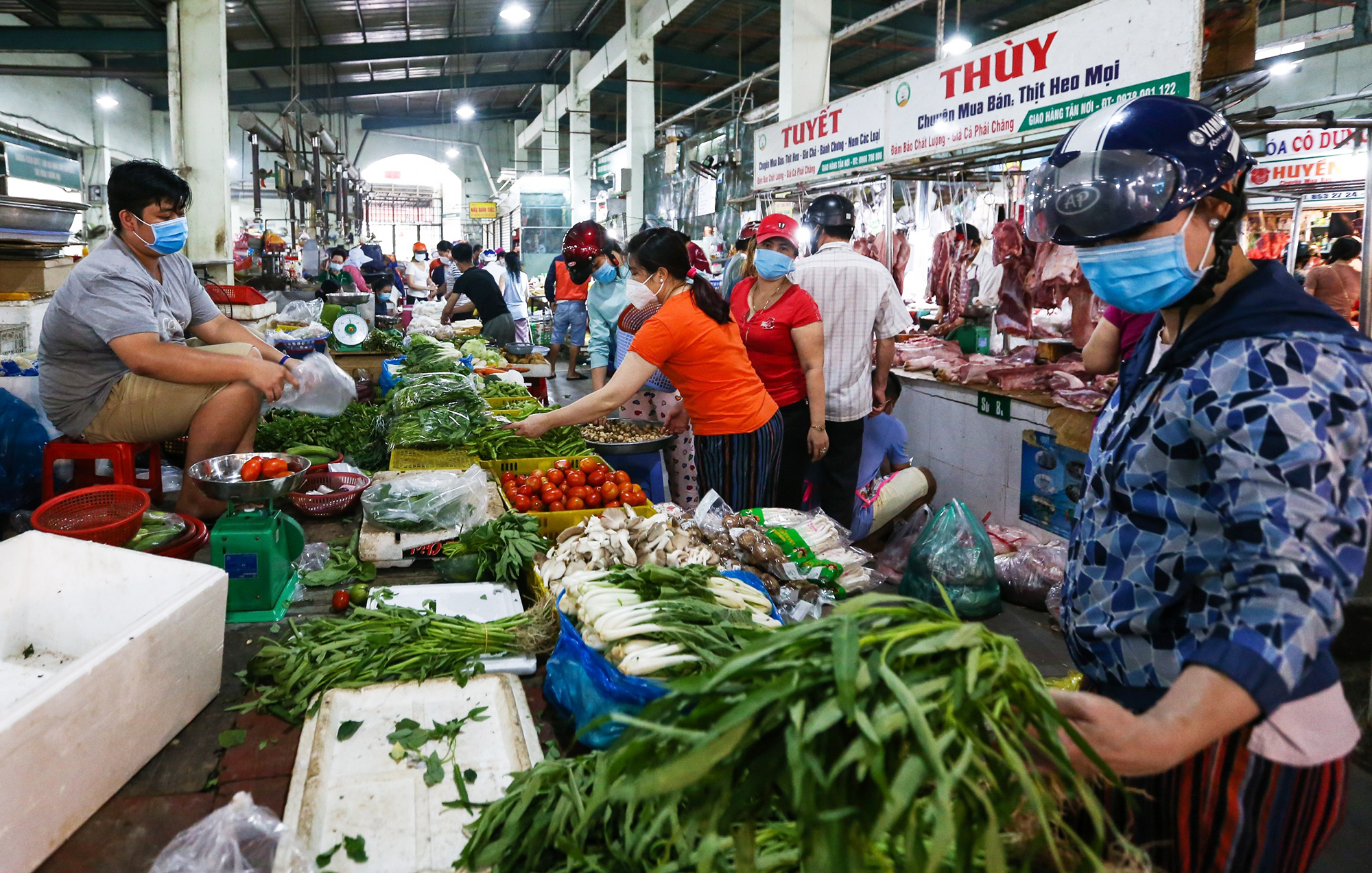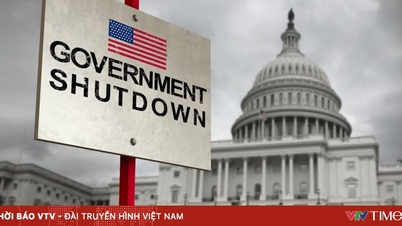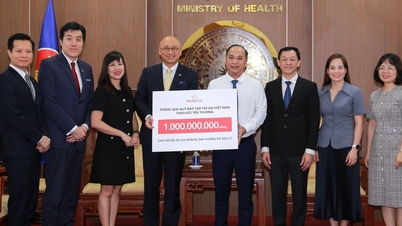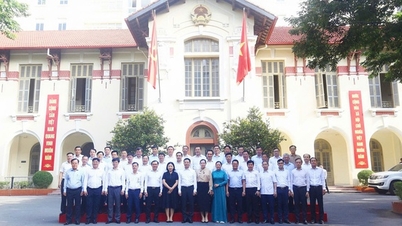Some reductions and some reductions, businesses are also tired
The Vietnam Chamber of Commerce and Industry (VCCI) has just issued a document commenting on the Ministry of Finance 's proposal to reduce value-added tax (VAT) for the first 6 months of 2024. According to VCCI, after consulting a number of businesses and experts, many opinions said that Vietnam's macroeconomic situation in 2023 will face many difficulties and challenges. The economic growth rate in 2023 is forecast to be only above 5%, which is a relatively low level in the past decades (except for 2020 and 2021 due to the impact of the Covid-19 pandemic). This difficult situation is expected to continue in the early stages of 2024 when the world economy has not yet recovered and the domestic economy is still facing many problems. Therefore, loosening fiscal policy, through continuing to reduce VAT at this time, is extremely necessary, contributing to supporting businesses to regain growth momentum and create jobs.

Recently, the VAT reduction policy has not spread to shoppers in traditional markets.
The VCCI representative emphasized that the VAT reduction measure has been implemented in 2022 and 2023, bringing many positive impacts to businesses and the economy , especially helping to increase domestic consumption in the context of export orders facing many difficulties. However, according to VCCI's records, businesses also encountered many difficulties when applying this policy, mainly stemming from the classification of which goods are subject to 10% tax and which goods are subject to a tax reduction of 8%. Although the Government has issued Decree 15/2022 and Decree 44/2023 guiding the implementation, in reality, the classification of goods and services into different tax rates is still confusing.
Many businesses have looked up the appendices of the two decrees mentioned above but still do not dare to confirm whether their goods and services are subject to a tax rate of 10% or 8%. The VCCI document clearly states: "Many businesses ask the tax and customs authorities, but these agencies do not dare to confirm for businesses for fear of being wrong. Many businesses have to hire additional accountants to adjust invoices and books to match the new tax rate. Some businesses reflect the situation of negotiating the purchase and sale of goods, reaching agreements with customers on quantity, quality, and price but not agreeing on the tax rate of 8% or 10%, so they cannot sign the contract. For the above reasons, it is recommended that the drafting agency consider the option of reducing VAT for all types of goods and services from 10% to 8% in the first 6 months of 2024".
Dr. Huynh Thanh Dien, Nguyen Tat Thanh University
Agreeing, economic and trade expert Vu Vinh Phu said that VAT reduction should be expanded to all types of goods and services. Specifically, the National Assembly should reduce VAT by 5% for all goods and services currently subject to a tax rate of 10%. According to Mr. Phu, the 2% VAT reduction has not been widespread enough in the past. It is almost only applied in supermarkets, shopping malls or large stores, while the majority of people buying goods in traditional markets do not enjoy this policy because sellers do not issue VAT invoices. Therefore, the 5% VAT reduction will be more widespread and will have a real impact on the price of goods nationwide. "Loosening this will not be a loss. Increased consumption will lead to more production, and other taxes and fees will also be collected more. At the same time, exports will have the opportunity to increase, which will bring in more foreign currency and higher import and export taxes. This policy also contributes to nurturing revenue sources and has long-term benefits for the economy as a whole," expert Vu Vinh Phu shared.
Extend tax reduction period until 2024
Expressing support for the VCCI proposal, Dr. Huynh Thanh Dien (Nguyen Tat Thanh University) commented: In the whole economy, one industry will be the input of another and vice versa. The nature of VAT is that enterprises will be deducted corresponding to input and output, but if VAT is reduced for all types of goods and services, many production and business enterprises will also reduce intermediate costs. At the same time, the tax reduction policy should last until the end of fiscal year 2024. Because forecasts show that the world economy has not yet overcome difficulties and next year will be even more difficult, with many unpredictable factors. Dr. Huynh Thanh Dien emphasized: The goal of tax reduction is to stimulate consumption and promote economic growth, so it does not differentiate between industries like some preferential policies. There should be no fear of budget deficits because when the economy recovers and grows strongly, other sources of revenue will certainly increase.

Businesses and experts propose reducing VAT from 10% to 8% for all goods in 2024
For example, if workers have jobs and their income does not decrease, many people will pay personal income tax. If businesses make profits, corporate income tax will increase. "According to general research, countries with low tax rates often have a lot of tax revenue because businesses and people do not try to evade taxes or move to countries with lower tax rates to operate. Tax policy is both a regulatory tool and a stimulus for production and business activities in general, and from there will create more revenue for the state," Dr. Huynh Thanh Dien added.
Sharing the same view, tax expert, lawyer Tran Xoa, Director of Minh Dang Quang Law Firm, said that the distinction between groups of goods that have VAT reduced from 10% to 8% is really confusing for many companies. This also makes businesses not interested in implementing it and from there this tax reduction policy does not reach consumers as targeted. The biggest benefit of tax reduction is to reduce the price of goods to people, contributing to increasing purchasing power, stimulating domestic production when the world market is facing many difficulties. If it is applied uniformly to all goods, businesses will easily implement it and the effect will certainly be more widespread. Not only that, the Government needs to propose to the National Assembly to approve the application of VAT reduction policy for the whole year 2024 to facilitate business operations and support people; thereby contributing to promoting increased production and economic recovery. According to lawyer Tran Xoa, the Ministry of Finance is the agency that has the data to estimate how much revenue will decrease, but if it is approved by the National Assembly before deciding on the revenue and expenditure levels of the national budget in 2024, it will not put pressure on the Ministry of Finance on revenue sources next year. Moreover, stimulating consumption and increasing production will certainly increase other revenues for the budget.
Currently, the policy of reducing VAT from 10% to 8% is being applied until December 31, 2023 for goods and services, except for the following groups of goods: telecommunications, financial activities, banking, securities, insurance, real estate business, metals and prefabricated metal products, mining products (excluding coal mining), coke, refined petroleum, and chemical products.
According to the General Statistics Office, the consumer price index (CPI) in October 2023 increased slightly by 0.08% compared to the previous month. Compared to December 2022, the CPI in October increased by 3.2% and compared to the same period last year increased by 3.59%. On average, in the first 10 months of 2023, the CPI increased by 3.2% compared to the same period last year; core inflation increased by 4.38%. Total retail sales of goods and consumer services revenue in October is estimated at VND 536,300 billion, up 1.5% compared to the previous month and up 7% compared to the same period last year. In the first 10 months of 2023, the total retail sales of goods and consumer service revenue at current prices is estimated at more than VND 5,105 trillion, an increase of 9.4% over the same period last year (but the same period in 2022 increased by 20.8%), if excluding the price factor, it increased by 6.9% (the same period in 2022 increased by 16.7%).
Source link



![[Photo] Closing ceremony of the 18th Congress of Hanoi Party Committee](https://vphoto.vietnam.vn/thumb/1200x675/vietnam/resource/IMAGE/2025/10/17/1760704850107_ndo_br_1-jpg.webp)

































![[Photo] Nhan Dan Newspaper launches “Fatherland in the Heart: The Concert Film”](https://vphoto.vietnam.vn/thumb/1200x675/vietnam/resource/IMAGE/2025/10/16/1760622132545_thiet-ke-chua-co-ten-36-png.webp)












































































Comment (0)